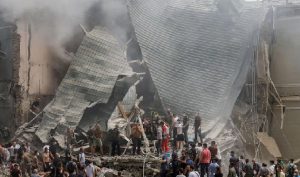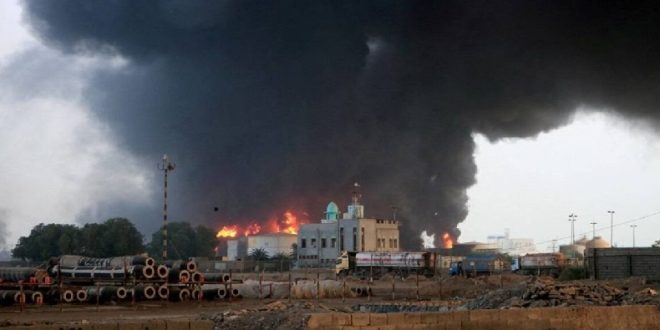01-10-2024
WASHINGTON/ DAMASCUS: The United States military says it has killed dozens of fighters from ISIL (ISIS) and an al-Qaeda-affiliated armed group in two separate attacks this month in Syria.
In a statement released on Sunday, the US Central Command (CENTCOM) said that a “large-scale airstrike” on a remote ISIL camp in central Syria on September 16 killed at least 28 operatives, including four senior leaders.
 The statement did not identify the people killed but said the attack would disrupt ISIL’s “capability to conduct operations against U.S. interests, as well as our allies and partners”.
The statement did not identify the people killed but said the attack would disrupt ISIL’s “capability to conduct operations against U.S. interests, as well as our allies and partners”.
CENTCOM also said that an attack in northwestern Syria on September 24 killed nine fighters, including “Marwan Bassam ‘Abd-al-Ra’uf, a senior Hurras al-Din leader responsible for overseeing military operations from Syria”.
This was the second attack targeting the senior leadership of the al-Qaeda-aligned group in as many months. In August, CENTCOM announced the killing of Abu-Abd al-Rahman al-Makki in an attack in Syria.
Hurras al-Din emerged in Syria in 2018, linked to al-Qaeda supporters.
The US has about 900 troops in Syria, as well as an undisclosed number of contractors. It says its forces are on a mission to advise and assist local allies trying to prevent a resurgence of ISIL, which in 2014 swept through parts of Syria and neighboring Iraq.
The Syrian government has repeatedly expressed its opposition to the US role in Syria and demanded the withdrawal of its forces.
However, Away from the media spotlight which remains on Israel’s war on Gaza, there are reports of growing confrontations between the Shia militias of Syria and Iraq and the American soldiers stationed in these countries. There are even reports, eagerly suppressed by both the US and Iran, of an increasing number of American casualties being treated in the region’s hospitals, which makes the situation all the more dangerous and susceptible to an unintended and sudden escalation.
Since the beginning of this latest Gaza war, the international community found solace in the fact that Hassan  Nasrallah, the leader of Iran-backed Lebanese militia Hezbollah, has publicly tried to de-escalate the situation and made clear that he is not seeking an immediate direct engagement with Israel or its allies. The fact that he had to come out and do so twice within a week, however, speaks volumes about the build-up of pressure in the region, which might get out of control at any moment.
Nasrallah, the leader of Iran-backed Lebanese militia Hezbollah, has publicly tried to de-escalate the situation and made clear that he is not seeking an immediate direct engagement with Israel or its allies. The fact that he had to come out and do so twice within a week, however, speaks volumes about the build-up of pressure in the region, which might get out of control at any moment.
While we live through the unravelling of one of the worst humanitarian catastrophes since World War II, the collective punishment of a besieged population of 2.3 million, which has already resulted in the deaths of more than 14,000 people, including over 5000 children, the G7 leaders have struggled even to utter the word “ceasefire”. Instead, the US and its allies have rallied to call only for much more diluted, inconsequential, and short-lived “humanitarian pauses”. Even as a four-day truce was finally agreed after 47 days of war crimes and indiscriminate violence on Wednesday, the US and its allies did not hesitate to announce their support for Israel’s declared intention to continue its brutal and disproportionate attacks on Gaza after the end of this short “pause” in hostilities.
By effectively giving Israel a carte blanche to do whatever it pleases in Gaza without any consideration of international law or the most basic human rights of the Palestinians, these states shattered their self-constructed image as the guardians of a “rules-based world order”. They did so partly because Israeli Prime Minister Benjamin Netanyahu manipulated their leaders and elites to buy into the misleading narrative that on October 7, Israel has experienced an event comparable to the Holocaust at the hands of an evil force that is identical to ISIS. (Int’l News Desk)
 Pressmediaofindia
Pressmediaofindia




